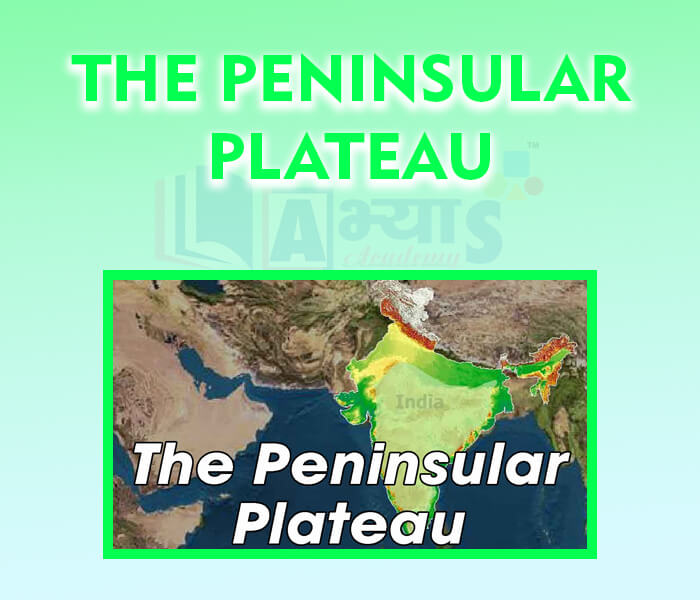The Peninsular Plateau










The Peninsular Plateau
The Peninsular Plateau: This is a tableland composed of the old crystalline, Igneous and metamorphic rocks. It was formed due to the breaking up and drifting of Gondawa land; thus it is a part of the oldest landmass. The plateau has broad and shallow rounded hills.This Plateau consists of two broad divisions: Central Highlands and Deccan Plateau1. Deccan plateau: This is the part lying North of the Narmada river which covers most of the Maiwa plateau. The Vindhyan range is bounded by the Central Highlands on the South and the Aravalis on the Northwest. Its further westward extension gradually merges with the sandy and rocky desert Rajasthan. It slopes from South-West to north-East, as indicated by the flow of the Chambal, Sind, Betwa and Ken rivers. Its Eastern edge is consists of areas known as Bundelkhand, Baghelkhand. Chota Nagpur plateau marks the further eastward extension drained by the Damodar river.Deccan Plateau: This triangular landmass lies to the South of the river Narmada, The broad base of the Satpura range form its North while the Mahadev hills, the Kaimur hills and the Maikal range form its tern extensions. An extension of the plateau is also visible in the North-East, generally knows as the Meghalaya Karbi-Anglong plateau and North Cachar hills.
A landmass bounded by sea on three sides is referred to as _________________ | |||
| Right Option : C | |||
| View Explanation |
The Central Highland and the Deccan Plateau are two broad divisions of __________________-- | |||
| Right Option : D | |||
| View Explanation |
Students / Parents Reviews [10]
Being a parent, I saw my daughter improvement in her studies by seeing a good result in all day to day compititive exam TMO, NSO, IEO etc and as well as studies. I have got a fruitful result from my daughter.

Prisha Gupta
8thIt was a good experience with Abhyas Academy. I even faced problems in starting but slowly and steadily overcomed. Especially reasoning classes helped me a lot.

Cheshta
10thIt has a great methodology. Students here can get analysis to their test quickly.We can learn easily through PPTs and the testing methods are good. We know that where we have to practice

Barkha Arora
10thMy experience was very good with Abhyas academy. I am studying here from 6th class and I am satisfied by its results in my life. I improved a lot here ahead of school syllabus.

Ayan Ghosh
8thAbhyas is a complete education Institute. Here extreme care is taken by teacher with the help of regular exam. Extra classes also conducted by the institute, if the student is weak.

Om Umang
10thA marvelous experience with Abhyas. I am glad to share that my ward has achieved more than enough at the Ambala ABHYAS centre. Years have passed on and more and more he has gained. May the centre flourish and develop day by day by the grace of God.

Archit Segal
7thAbout Abhyas metholodology the teachers are very nice and hardworking toward students.The Centre Head Mrs Anu Sethi is also a brilliant teacher.Abhyas has taught me how to overcome problems and has always taken my doubts and suppoeted me.

Shreya Shrivastava
8thAbhyas Methodology is very good. It is based on according to student and each child manages accordingly to its properly. Methodology has improved the abilities of students to shine them in future.

Manish Kumar
10thOne of the best institutes to develope a child interest in studies.Provides SST and English knowledge also unlike other institutes. Teachers are co operative and friendly online tests andPPT develope practical knowledge also.

Aman Kumar Shrivastava
10thIt was good as the experience because as we had come here we had been improved in a such envirnment created here.Extra is taught which is beneficial for future.
